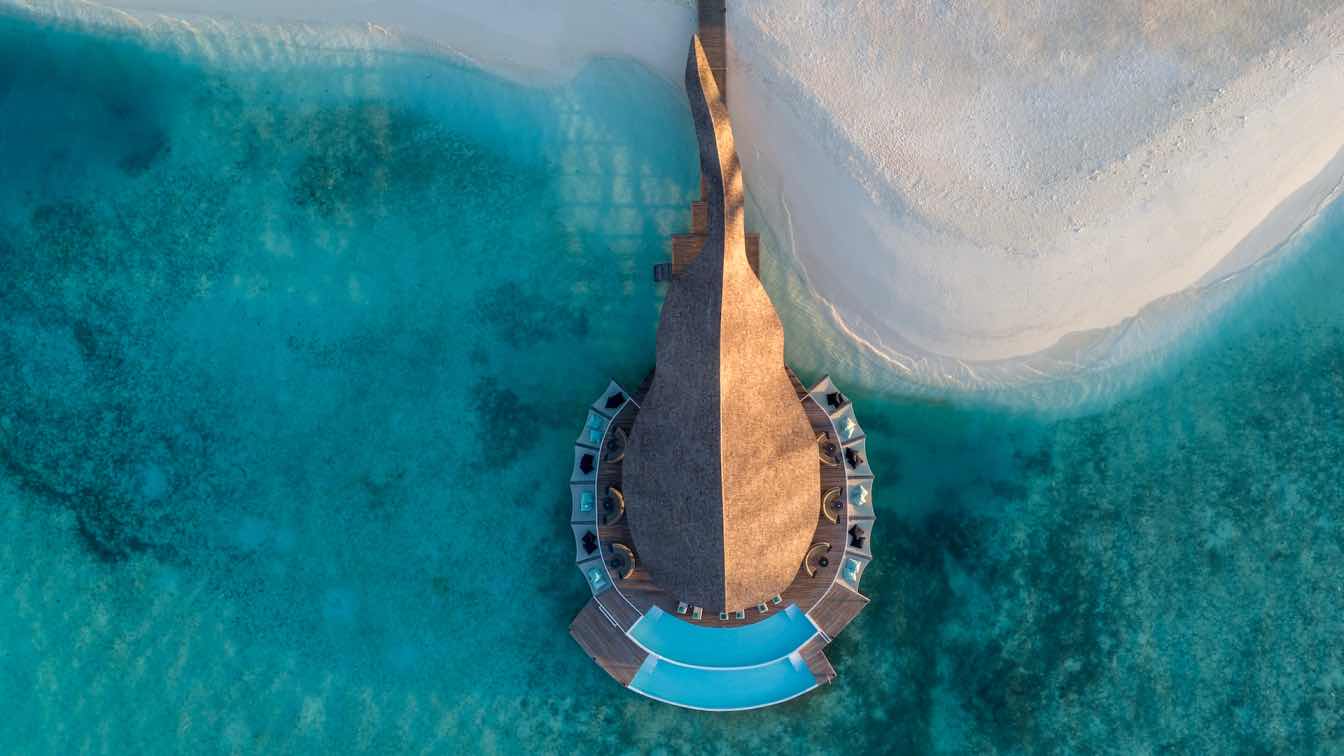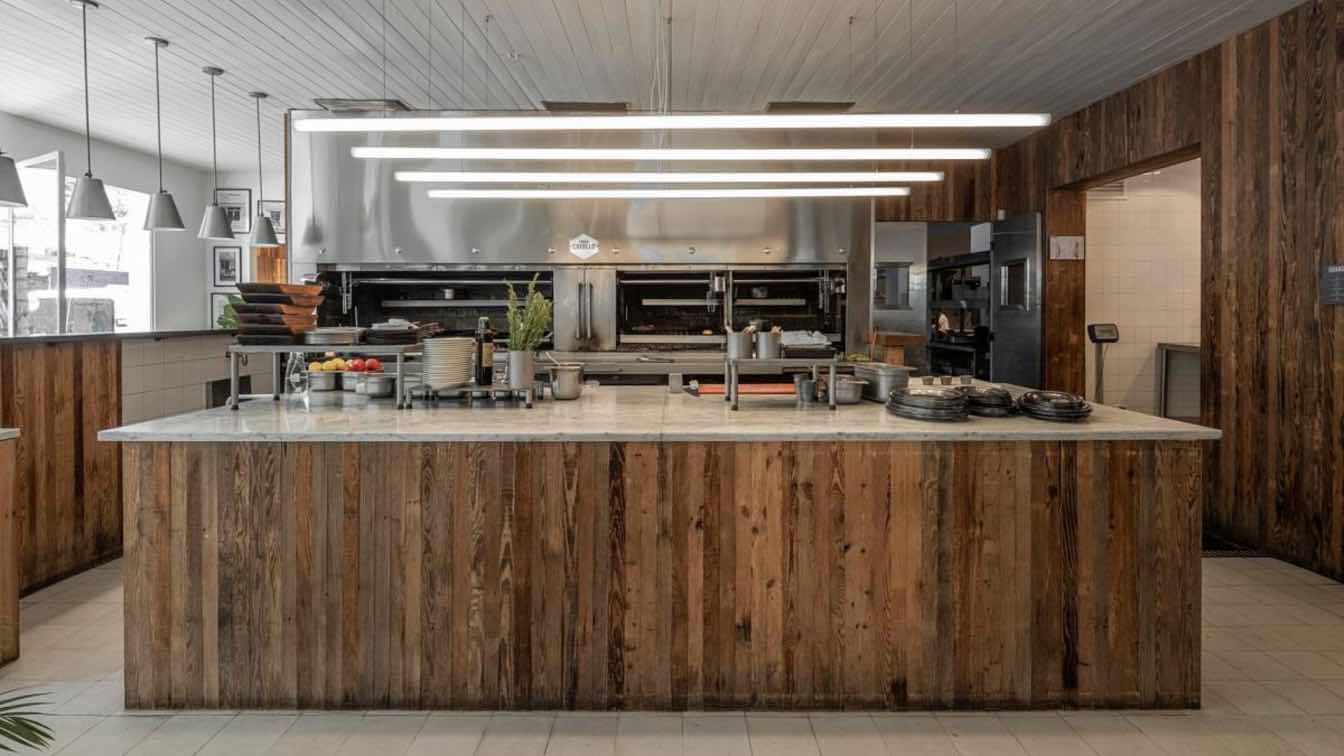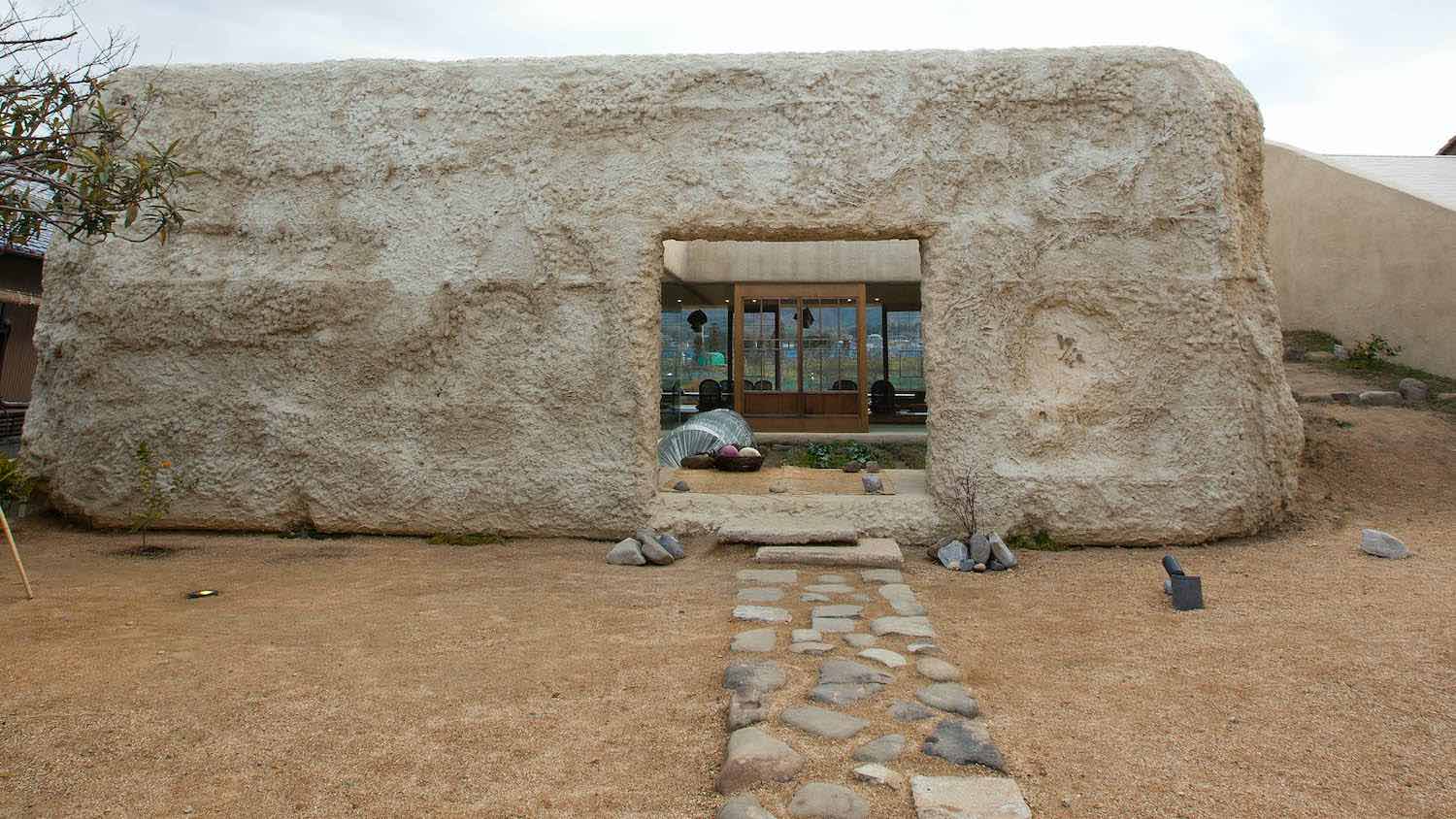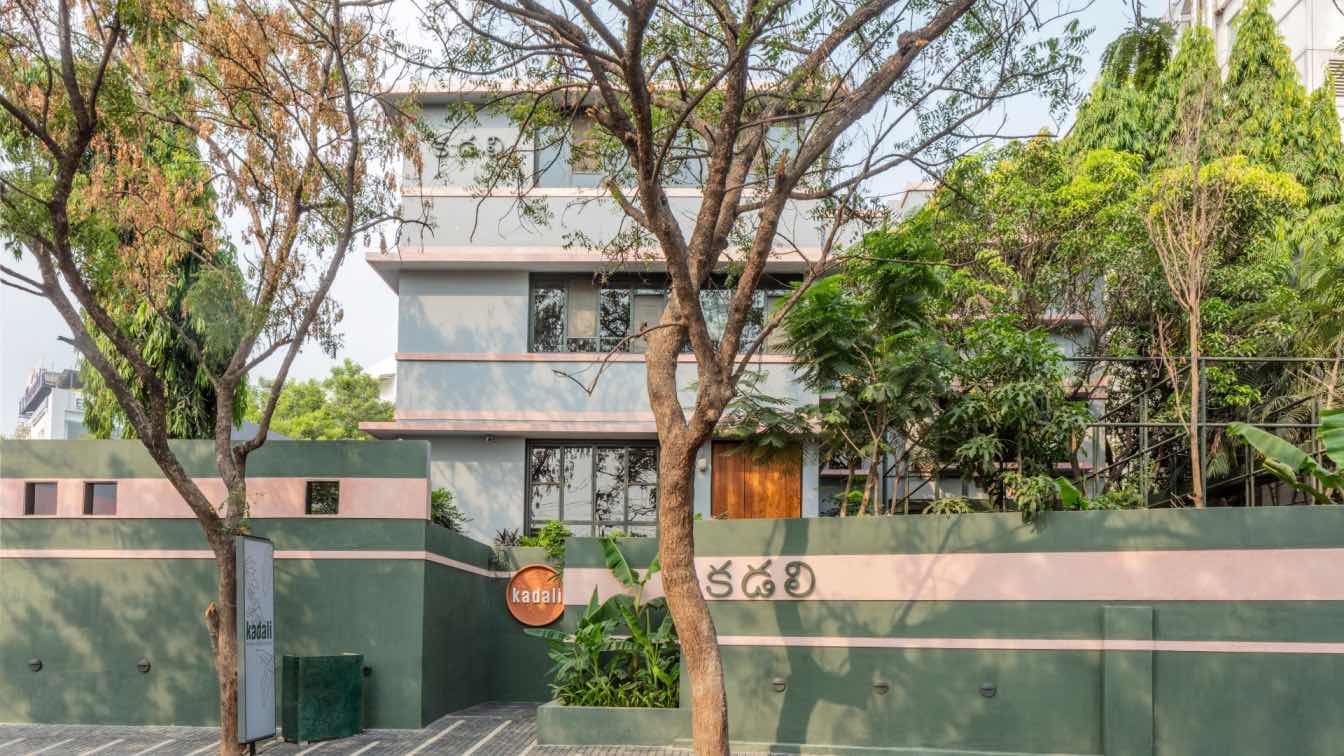Throughout human history, explorers, sailors, and seafarers have told tall stories of the fabulous sea creatures found in the depths of the ocean – from the leviathan that swallowed Jonah, the giant squid that grappled with the Nautilus to Moby Dick seeking revenge on the Pequod and its crew; our maritime literature, nautical maps and collective psyche are riddled with sea monsters.
From time to time, these mythical creatures rise to the surface. One of these gentle giants has recently emerged in a calm, tropical lagoon in the Maldives where a select few can dine on fine Japanese cuisine, deep in the belly of the beast, beneath its dramatic bamboo ribcage.
The design of this overwater Yakitori Restaurant and Bar was created by Nomadic Resorts to revamp the existing jetty structure at Banyan Tree Vabinfaru to create a new iconic dining experience.
This stunning example of biomimicry takes its inspiration from the sleek silhouette of the Pink Whiprays (Pateobatis fai) that graze in the surrounding lagoon. The naturally ventilated, bio-climatic structure features an incredible sea saltwater infinity pool, and an array of overwater catamaran nets where guests can relax while enjoying breathtaking sunset panoramas, caressed by the gentle sea breeze.
Crafted meticulously with bamboo, the structure is amplified by the dramatic Maldivian landscape and reflected in the mirror like lagoon. The looping, shingled tail winds back down the jetty to link the building with the mainland and to guide the visitors into the building.
Inspired by the Dhivehi language, where Madi symbolises “ray,” and Hiyaa signifies “shelter,” the building’s name Madi Hiyaa pays tribute to the graceful rays that migrate across the Indian Ocean.

The roof structure is built entirely out of bamboo. Being a Bamboo Ambassador at the World Bamboo Organization, Nomadic Resorts lead architect Olav Bruin intended to show the potential of this amazing building material at this iconic location, as bamboo has the potential to play a major role in the building industries transition towards a more sustainable future.
Being one of the fastest growing renewable building materials in the world, bamboo is an extremely effective carbon sink, as we need to move towards a future where buildings actually sequester carbon instead of expelling it. Shaped by a series of hyperbolic paraboloid columns and roof trusses, the structure reflects the endo skeleton of the Mobulidae family. Dendrocalamus Asper bamboo was used for the primary structure and the smaller Gigantochloa Apus bamboo was used for the grid infill. The roof is clad with timber shingles.
The sleek interior features a bar and services blocks clad with the black Gigantochloa Atroviolacea bamboo that subtly contrasts with the pale bamboo columns and timber decking. The rhythmic, pattern of the bamboo internodes refers to the movement of the waves. Madi Hiyaa is an ideal space for intimate gatherings, offering guests an opportunity to celebrate key life events with their loved ones in a memorable environment.
Madi Hiyaa, is the latest member to the family of ray inspired structures that Nomadic Resorts has developed and joins The Den at Soneva Kiri and the treehouses at Playa Viva, as part of an improbable family of bamboo rays stretching from the pacific coast of Mexico to the gulf of Siam.
The project demonstrates Nomadic Resorts’ design approach that is inspired by the Genius Loci or spirit of the place, resulting in buildings that fit symbiotically into their natural surroundings, in the believe that architecture should serve as a bridge to connect nature, culture and people.





















About Nomadic Resorts
Nomadic Resorts specializes in biophilic architecture and regenerative landscape design and has worked on hospitality projects across Europe, Asia, Africa and the Americas. The studio has been honored with several prestigious international awards including the Ahead Global Gamechanger, Architecture Master Prize, International Architecture Award, Design for Asia Award and the UNESCO Prix Versailles.





